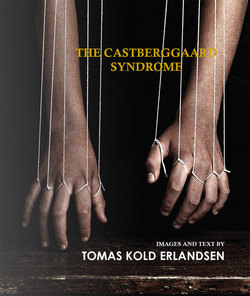Читать книгу The Castberggaard Syndrome - Tomas Kold Erlandsen - Страница 4
На сайте Литреса книга снята с продажи.
PREFACE
ОглавлениеSeveral people have asked me to write about Castberggaard syndrome and publish it, even though I had initially thought that it was just my own hypothesis. I do not have any academic or research background, but since I have my own experiences of being deaf, that can be seen as even heavier than an academic research. In addition several senior academics have expressed excitement about the concept, they have asked for the issue to be more widespread and they wanted to take part of my material for their own future work. I have also held several lectures around the country and abroad.
Therefore, allow me to publish my thoughts so everyone can read about them and take position.
When reading the book, it is important that you are aware of my point of view: that being deaf is part of a cultural and linguistic minority, just like for instance, the black population in Sweden. Also, that deaf people are not handicapped by lack of hearing.
If one wants to read about deaf people as handicapped, one should read the medical manuals on the deaf, written by people with minimal knowledge about being deaf.
I must emphasize that I do not intend to make villains of hearing people (especially not parents), as most of them are acting in good faith because they have been guided to that which induces the Castberggaard syndrome. Had they been instructed otherwise, the situation would have been very different. That being said, the intention of this book is not to make villains of hearing people, even though it may seem that way.
To understand what the Castberggaard syndrome is, you first have to understand what audism is, and also realize it exists to a great extent. The Castberggaard syndrome is a consequence of audism, and therefore it is necessary for you as a reader to understand some things about it before moving on to the subject of the Castberggaard syndrome. Therefore, you should not be surprised when I begin with a brief description of what audism is and then refer you to two other books that describe the subject more thoroughly. I will then describe the background of my views on the concept of the Castberggaard syndrome and from there move on to describe what the syndrome is. I have developed the term ”the Castberggaard syndrome” over a period of several years, basing it on my own experiences, the experiences of others, interviews and on feedback from my lectures on the topic.
Towards the end of the book, I will be writing about how to prevent the Castberggaard syndrome and describe how to influence deaf people in a positive way. If you want to know even more about this subject, I recommend the book Deafhood/Audism (2011) by Patrik Nordell and the article “Reframing: From Hearing Loss to Deaf Gain” from Deaf Studies Digital Journal, issue one (2009).
Enjoy reading
Tomas Kold Erlandsen
SWINGING CHAIR
We often imagine that the elderly person at a nursing home sits or swings on a swinging chair is a vegetable or a person with dementia. This picture of the hand that is bound to the swinging chair shows that the deaf have been indoctrinated to abandon their identity in order to follow others’ desires.
